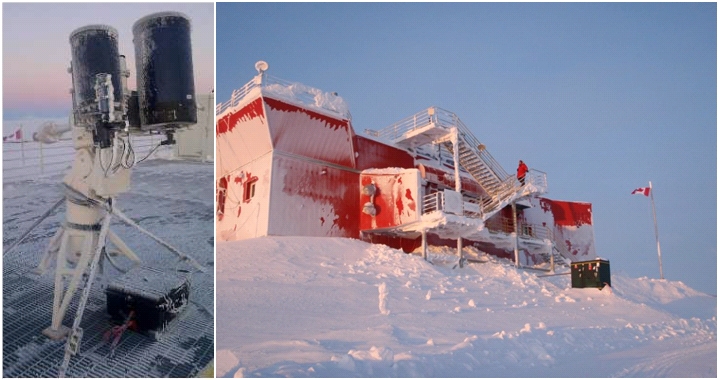As the Canadian Winter approaches and our country goes into collective hibernation, we start to remind the world how cold it gets here, and that the tourist season is in July. Still, we Canadians are proud of our hardiness and we will welcome you with open arms if you decide to visit in January.
Still, if you look at a population map of Canada, we mostly live in the southern 10% of our country’s latitudes. There are thousands of square kilometres of open wilderness to explore. We want to be warm, but we also love our home country. Many Canadians travel south for part of the Winter to get some sunshine and shake off the seasonal affective disorder, aka SAD (A perfect name for the disorder if you ask me). If you are really lucky, you are able travel to warmer climates for work!

If you speak to a professional observational astronomer, chances are they have been to one of the following lovely locations for work: Hawaii, Arizona, or Chile. Turns out that large telescopes need to be placed in warm, dry climates, usually on top of gorgeous mountain chains. Hard work I know.
This had me thinking about good conditions for Astronomy. Why not the Canadian Arctic? Sure it’s cold, but it’s dry and skies can be clear for long periods. Then I saw a story about a scientist named Eric Steinbring who was proposing just that!

Steinbring, who led a team of National Research Council Canada scientists, said that a high Arctic site can “offer excellent image quality that is maintained during many clear, calm, dark periods that can last 100 hours or more.”
The team was commenting on recent surveys at the Polar Environment Atmospheric Research Laboratory (PEARL). They concluded that the site on Ellesmere Island has dark, clear skies approximately 68% of the time, and commented that it “can allow reliable, uninterrupted temporal coverage during successive dark periods, in roughly 100 hour blocks with clear skies and good seeing.”
There are challenges however. Strong winds can bring in intense storms that only last for short periods, but can still wreak havoc on equipment. Steinbring’s team has been working on overcoming these challenges, allowing for the potential study of phenomena such as Gravitational Lensing, as well as the construction of multiple telescopes at PEARL. Future Astronomers could spend a week up North probing the depths of the universe in the frigid cold.
In all fairness, observational astronomers are up all night observing and often sleep through the beautiful warm days, so it’s not really a vacation. If anything it may be torture to travel to a warm location and not spend a single day in the outdoor warmth. Not to mention the tops of mountains aren’t all that warm. The temperature can dip below freezing on Mauna Kea in Hawaii, while the beaches are sitting at 30 degrees Celsius. Still, the great thing about being an astronomer is that you absolutely love the night sky, and the best night skies in the world are at your doorstep when you visit these locations. Even visiting the cold reaches of the Arctic is an adventure, and I would say most astronomers have a sense of adventure, choosing to dedicate their lives to exploring the unknown.
Keep doing what you love, wherever it takes you. Maybe that love will keep you warm on those cold Arctic nights.
